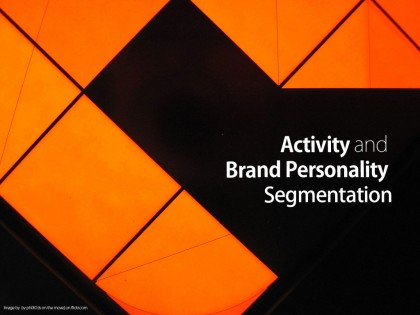Does The New Marketing Model require new Target Groups?
- (Or is it about time anyway that we found better ways to segment our customers when defining marketing and advertising objectives).
Adrian over at From the Head of Zeus Jones wrote a couple of posts about this about a week ago (1, 2, 3), and I haven’t been able to put it to rest since
. Today my mind might have had a breakthrough while reading some articles by Stephen King in the book A Master Class in Brand Planning :o)
I have previously suggested that New Target Groups may be linked to activities (1). As research is starting to see that people don’t want to access everything and then make an educated choice – but rather set out from the beginning to participate in a specified activity.
- Today the customers biggest challenge is navigating through the clutter of “Everything for Everyone”-applications in order to locate the proper content before they even can go on to solve the activity. When new marketing initiatives will make the experience accessible automatically so that the customer can concentrate on the activity – and only the activity
. (this explanation is very web-centric)
But it is more nuanced than that. Because The New Marketing Model is not about only identifying activities, it’s about identifying possibilities through the study of culture and motivation. By first identifying groups of people who would like to interact with the brand in the same kind of way – and then understand why they would.
- This research is meant to inspire specialist/creatives to articulate new solutions
. And not, as a lot of classical marketing research does, present creatives with predefined articulated answers by consumers who don’t know what they want – or how to explain it.
So we need target groups specified by what they want to do with the brand and why..
Stephen King’s definition of Brand Personality Segmentation (from the article “What can pre-testing do?” written back in 1967) can be a missing part of the target group puzzle…
The brand Personality Segmentation raises from an interpretation of the Gestalt Theory of brands: That every brand is a TOTALITY, a combined experience formed by a cognitive, affectionate and conative response in the customer (believe, feel, try). And take special notice of the term “try”, because New Marketing has got a lot to do with trying, using and experiencing.
. (and in that context this other research is very interesting..)
- [In the article King also specifies that one of the things advertising can do best is enhance the positive attitudes of brands for people who have already used it – and the new marketing models are all about extending the usage and time spent with the brand – excellent :o)]
So, I’m not quite sure how to define this, but I believe, as an answer to Adrians question, that The New Targeting Groups could be defined by a combination of Activity and Brand Personality Segmentation
– Systolic Blood Pressure, SBPf . Depression viagra pill.
.
Where one seeks to identify how the target groups feel about a brand (the perceived personality) and to what extent they would like to involve themselves with it (activity) – and why (combination).
By identifying these segments we should be able to tailor each activity to each group, understand the extent of each experience, it’s content, meaning and how it would affect the customer.

